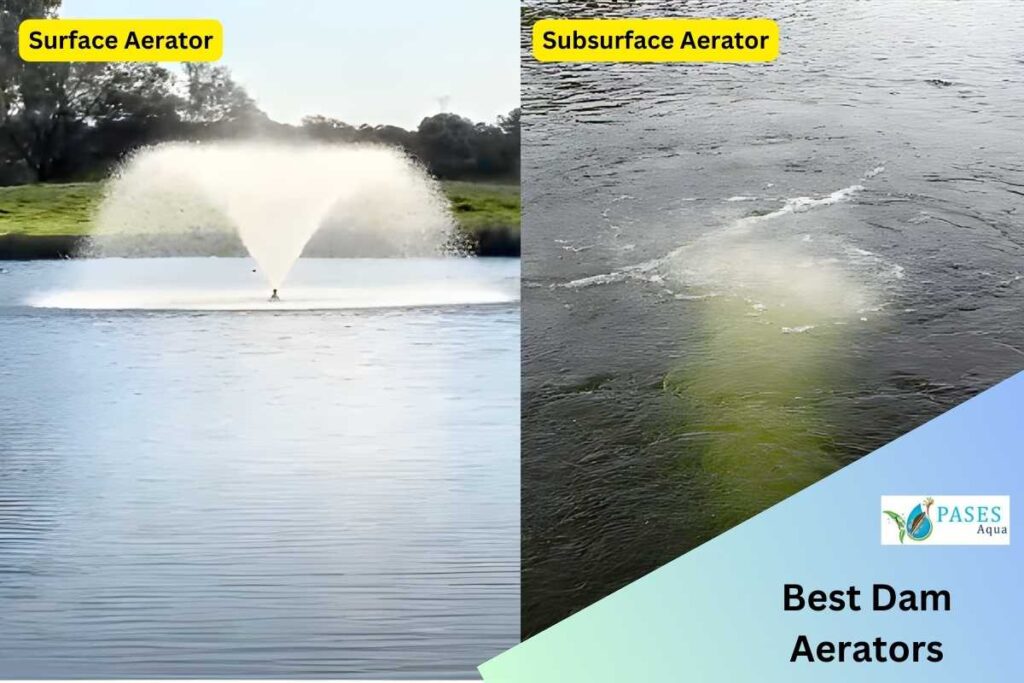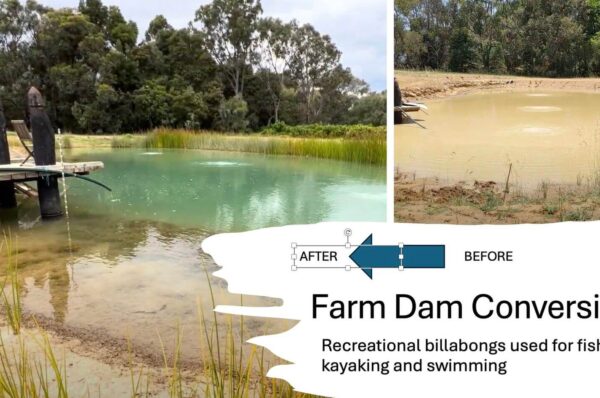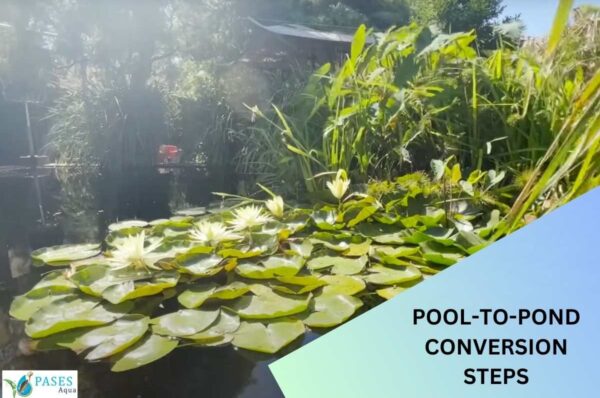Selecting the right dam aerator is critical for maintaining the health of your aquatic ecosystem. Dam aerators improve water quality by increasing oxygen levels, which in turn supports aquatic life and helps to break down unwanted bacteria and algae.
With various types of aerators on the market, such as surface aerators and sub-surface aerators, it is essential to understand which system is most effective for your specific needs.
Understanding the dynamics of your dam, including size, depth, and water quality requirements, will guide you in choosing the appropriate aeration system. Factors such as energy efficiency, aeration capacity, and the physical characteristics of the dam should be carefully considered. Sub-surface aerators, for instance, can be a discreet option that works efficiently for deep water bodies, while surface aerators can be suitable for dams with significant water movement requirements.
Key Takeaways
- Proper aeration is essential for a healthy dam and aquatic life.
- The best aerator for a dam depends on its unique characteristics and aeration needs.
- Evaluating the dam’s size, depth, and water quality goals is crucial for selecting the correct aerator.
Recommended aeration systems based on dam size.
For Small dams
SUBAIR Aeration Kit 1
Matala MEA Lake Pro 1 Kit
For Mid-size dams
SUBAIR Aeration Kit 2
Matala MEA Lake Pro 2 Kit
For Large dams
SUBAIR Aeration Kit 3
Matala MEA Lake Pro 3 Kit
Understanding Dam Aerators
Selecting the exemplary dam aerator involves considerations such as dam size, water quality, and the specific needs of the aquatic ecosystem. Dam aerators enhance oxygen levels, promote gas exchange, and improve water health.
Types of Dam Aerators
There are two primary types of dam aerators: surface and sub-surface. Surface aerators work by agitating the water at the surface, which promotes oxygen exchange. They are suitable for shallow dams and often include fountain aerators. Sub-surface aerators, on the other hand, release bubbles from diffusers placed at the bottom of the dam, leading to more thorough oxygenation and circulation, especially in deeper water.
Surface Aerator:
Subsurface Aerator:

Key Factors in Aerator Selection
The selection of an aerator should account for the dam’s size, depth, and shape. The power source and maintenance requirements are also critical, with options ranging from electrical units to windmill aerators, such as the Outdoor Water Solutions windmill aerator, which harnesses wind power.
Benefits of Aeration
A well-aerated dam supports dissolved oxygen levels, which is fundamental for the health of beneficial bacteria and all aquatic life. Aeration helps control algae blooms, minimises odour problems, and reduces excess nutrients that can lower water quality.
Aerator Technology Advancements
Recent advancements in diaphragm aerators like nanobubble technology and Balcam II technology can increase efficiency and oxygen transfer rates. Brands like Subair, Matala and Vertex are known for incorporating such innovations.
Environmental Impact
Dam aerators can impact the environment positively by enhancing gas exchange and reducing sludge build-up. They help create a stable and healthy ecosystem sustaining diverse aquatic life.
Considerations for Dam Aeration Systems
When choosing a dam aeration system, consider the running costs, durability, and how weatherproof it is. The system should withstand Australia’s varying climate conditions and be cost-effective over time.
Installation and Maintenance
Proper installation and maintenance are vital for an aerator’s longevity. Engaging professionals for installation and following a regular maintenance schedule is recommended to ensure optimal performance and reduce long-term costs.

Evaluating Water Quality Indicators
Water quality is evaluated by measuring dissolved oxygen, pH, BOD, ammonia, nitrogen, and clarity. Testing aerators before and after installation can demonstrate their effectiveness in managing these indicators.

Aeration Solutions for Different Sizes of Dams
Aeration solutions must be tailored to the specific conditions of the dam. Small residential dams might benefit from a compact aerator like the Pond one series, whereas larger dams might require a more robust system involving multiple diffusers and high-powered circulation pumps.
Choosing the Best Aerator for Your Dam
Selecting the ideal aerator for your dam is crucial for maintaining water quality and supporting aquatic life. The right aerator can enhance oxygen levels and control the accumulation of unwanted gases like methane and hydrogen sulphides.
Assessing Dam Parameters
When considering aeration solutions, one must first assess the size and depth of the dam. The surface area and water depth are critical in determining whether a surface or sub-surface aerator is optimal. For deep dams, a sub-surface aerator like Vertex or Hakko may more effectively prevent stratification and promote gas exchange throughout the water column.
Comparing Aerator Types and Brands
There are various aerators to choose from, including fountains, windmill aerators, and electric aerators. Brands such as Subair and Otterbine are reputable brands offering different types of aerators.
Addressing Unique Dam Challenges
Each dam presents its challenges, from algae and weeds to fish kills and algal blooms. Factors such as existing aquatic life, iron levels, and environmental considerations dictate the type of aerator needed. Sub-surface aerators are generally more effective for deeper water basins, where oxygen needs to be dispersed at various depths.
Cost Considerations and Long-Term Value
Budget is a significant concern, with initial outlay, running costs, and maintenance requirements to consider. While options like the Otterbine may have higher upfront costs, their energy efficiency and longevity can provide better value over time. Balancing upfront investment with the anticipated cost savings from reduced maintenance and sludge control is essential.
Performance and Efficiency Metrics
Finally, measuring oxygen levels and dissolved oxygen is crucial for evaluating aerator performance. Testing aerators before installation can save time and resources, ensuring the chosen system meets the dam’s requirements. Look for systems with high-efficiency ratings and proven circulation and oxygen distribution results.
Frequently Asked Questions
When choosing the best dam aerator, it’s essential to consider factors such as dam size, water conditions, and specific aeration needs. These frequently asked questions aim to guide you through the selection process.
How do I select the right aerator for my dam?
Selecting the correct aerator for a dam involves assessing several factors, including the dam’s size, depth, the level of sunlight exposure, and the nutrient levels present. It’s recommended to take a tailored approach as one size does not fit all when it comes to dam aeration.
What are the benefits of solar-powered aerators for dams?
Solar-powered aerators for dams offer the benefits of being environmentally friendly and cost-effective over the long term. They harness the sun’s power, eliminating the need for electrical sources, which can be particularly advantageous for remote locations.
Can floating aerators improve the water quality of my dam?
Floating aerators can significantly improve water quality by increasing oxygen levels and circulation. This helps reduce algae growth, eliminate foul odours, and maintain a healthy ecosystem for aquatic life. Surface aerators are a practical solution for such requirements.
Where can I find reliable dam aerators for sale?
Reliable dam aerators can be found through specialist suppliers that offer a range of aeration equipment suited for various dam sizes and uses. Purchasing from reputable vendors that guarantee high-quality and durable equipment is crucial. For instance, Water Quality Solutions provides a selection of top aerators for residential dams.
What should I consider when sizing a surface aerator for my dam?
When sizing a surface aerator for your dam, consider the surface area of the dam, target oxygenation levels, and the type of water body. Equipment rated for your specific size and type of dam can ensure effective aeration without wasted energy.
Is installing an aerator in my dam necessary for better water management?
Installing an aerator is necessary for better water management in scenarios with a lack of natural water movement, leading to low oxygen levels. This is often crucial in preventing stratification, inhibiting algae growth, and preserving aquatic life, improving overall water quality and ecosystem health.





